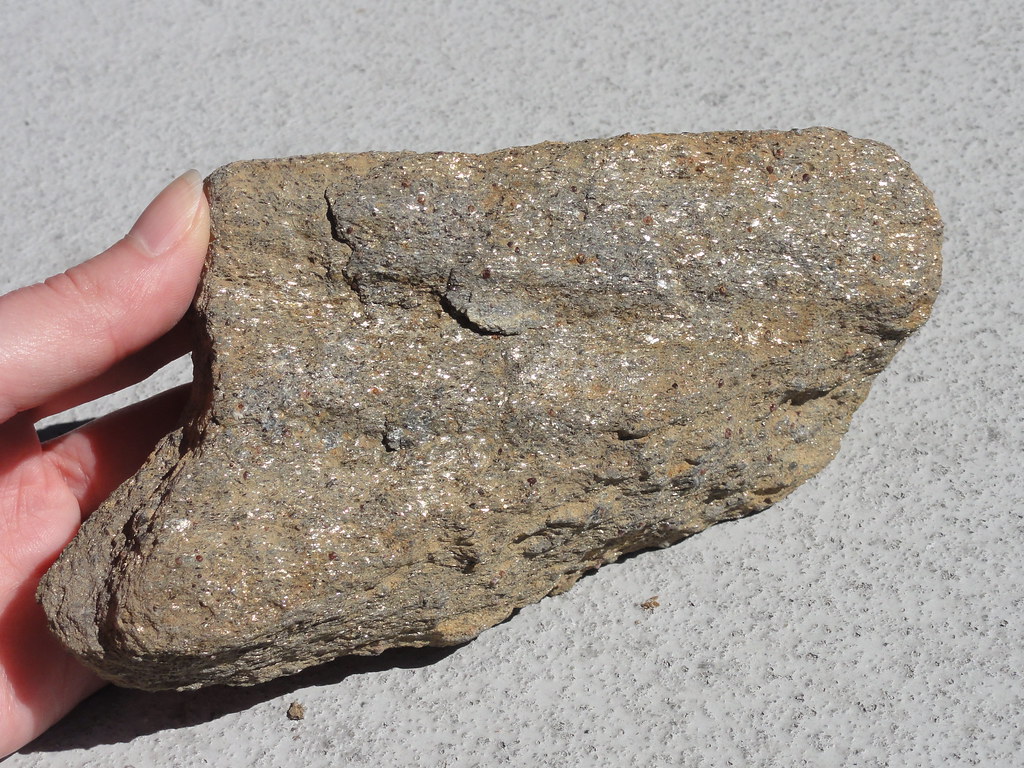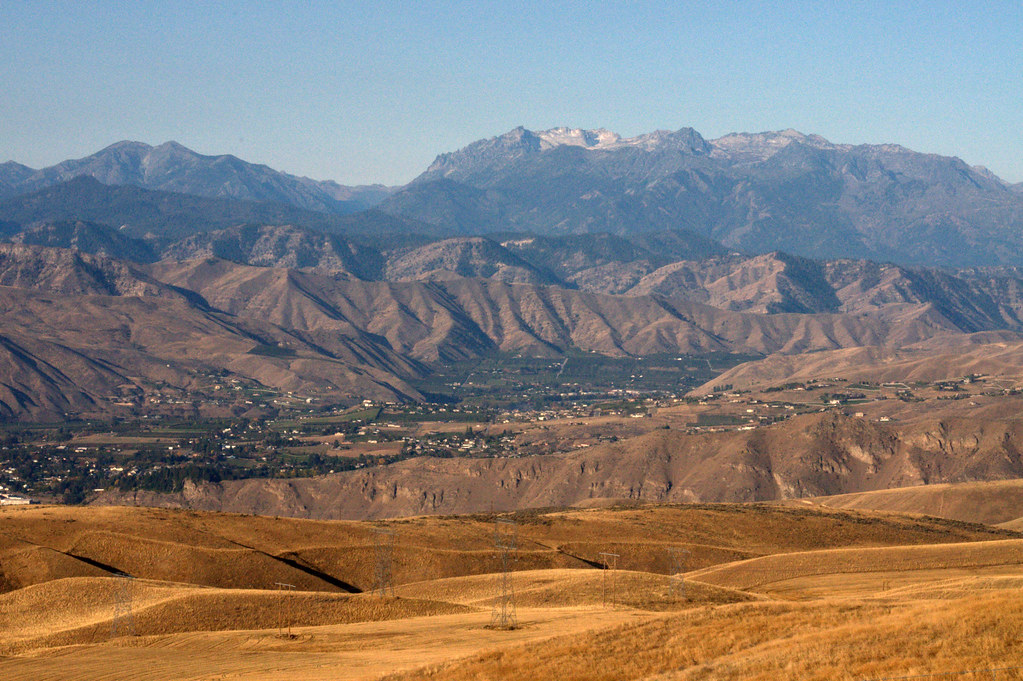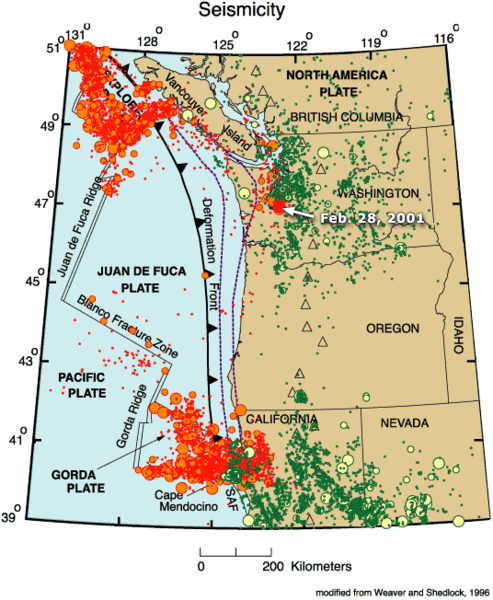Some photos of that glorious piece of garnet mica schist I found on the hill behind my house:
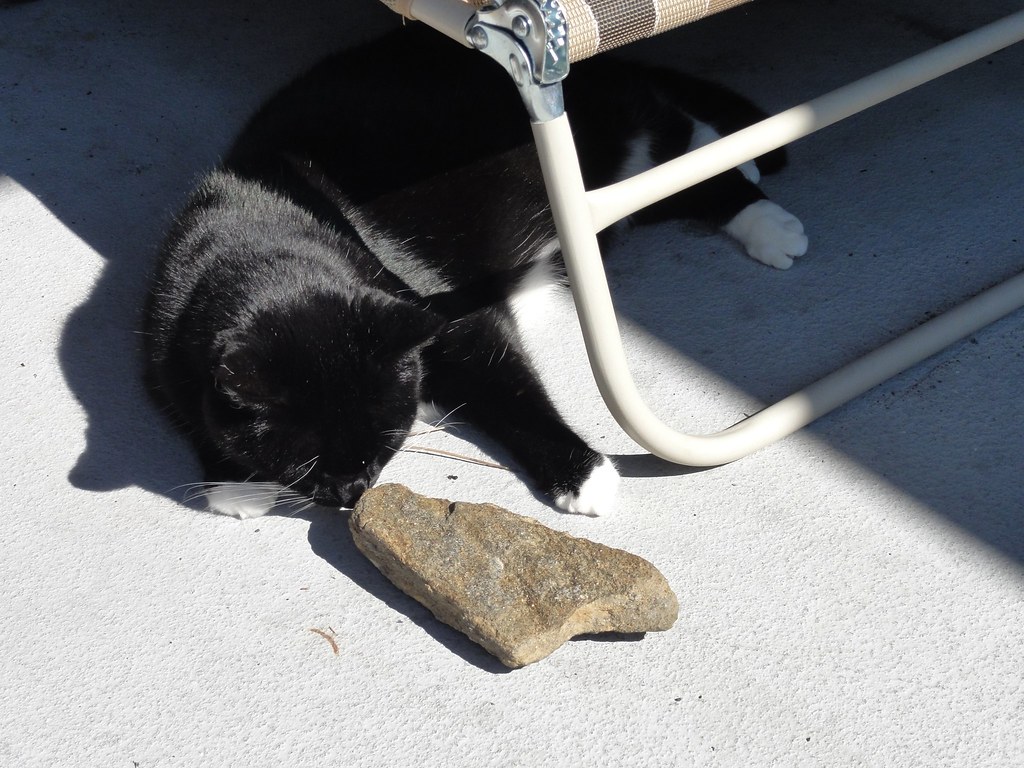
There she is! Kitteh for scale.
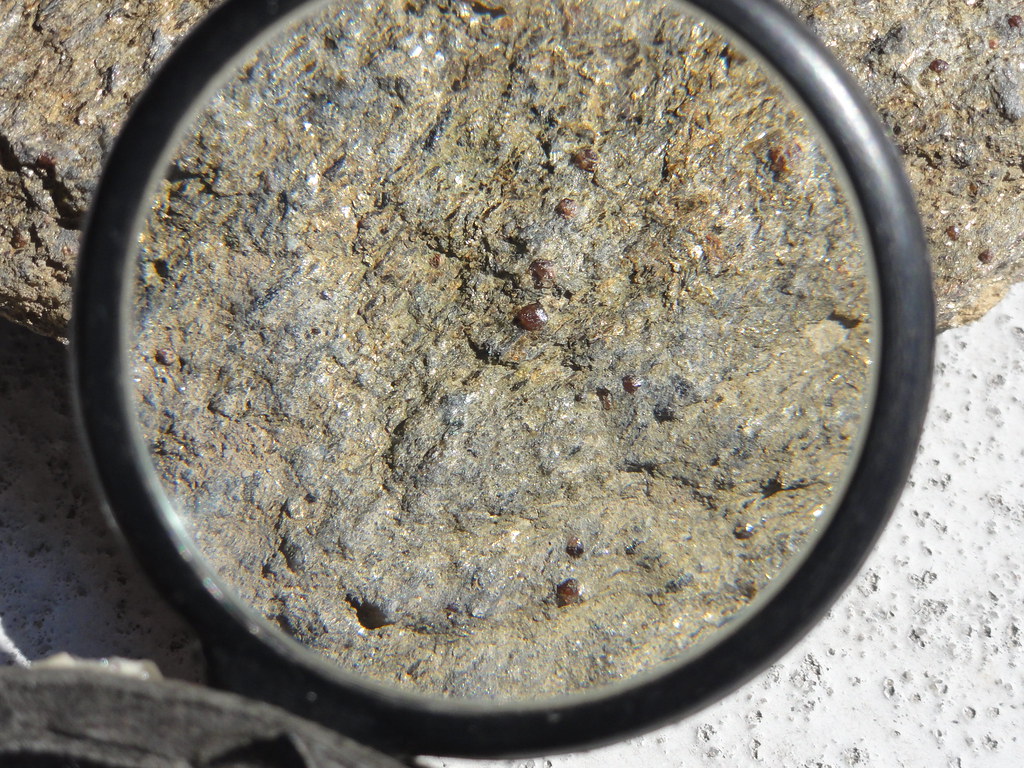
And a shot through ye olde hand lens. Look! Garnets!
I have no idea where this thing actually came from. The hill behind my house seems predominately outwash, and there isn’t bedrock around so far as I know. Certainly not bits of the metamorphic core. I’m wondering if someone just abandoned it, like people do puppies. No matter, it’s got a happy home now.
Elli Goeke wrote the definitive series of posts on garnet schist. If you want to know more about this beauty (and you do, you know you do!), see:
Metamorphic reactions — the basics
Mud to cordierite – sillimanite hornfels — contact metamorphism at work
Mud to garnet schist — regional metamorphism at work
I will be eternally grateful to her for writing these. A round of applause, please, my darlings, and if you’re ever lucky enough to meet her IRL, be sure to buy her a drink. I owe her a few gallons, so I hope she’s thirsty when we finally meet.
Don’t be surprised if I post more photos of this find. These were shot in haste on my lunch break, and it deserves better. But several people have wanted to see it, and I just couldn’t wait anymore.


